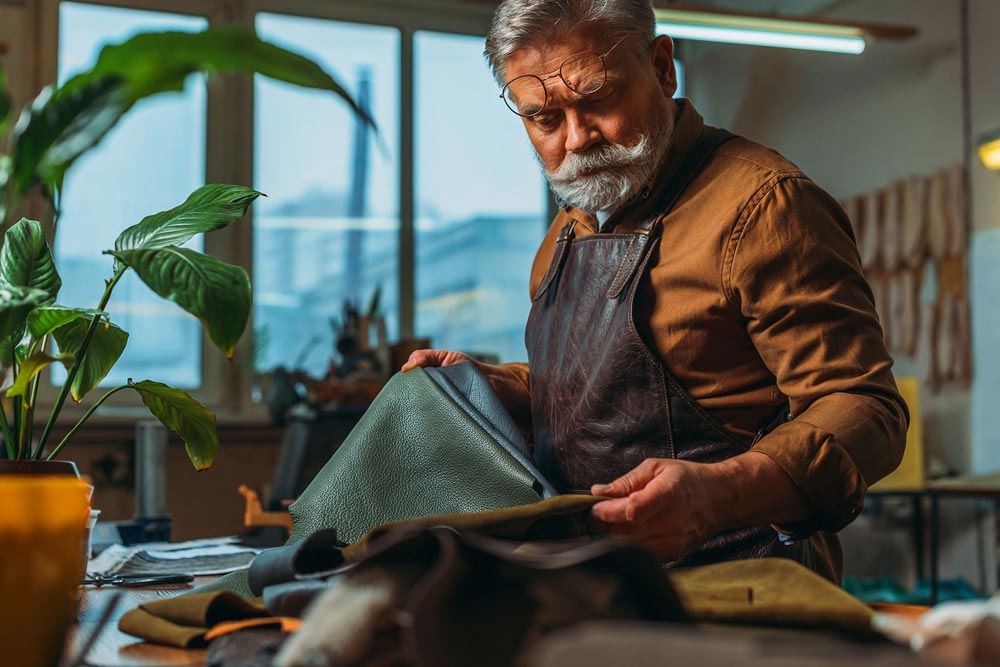
28 May How Can Craftsmen Best Maintain Their Leatherworking Tools?
In the world of leatherworking, your tools are not just instruments; they’re extensions of your hands. Proper maintenance isn’t just about extending the life of these tools—it’s about preserving the quality of your craftsmanship. Today, we’re diving deep into the nuts and bolts of keeping your leatherworking tools in pristine condition, ensuring they continue to perform at their best.
Keep It Clean: The First Rule of Tool Care
Let’s start with the basics: cleanliness. Leather debris, dust, and oils can accumulate on your tools, leading to damage over time. For cutting tools like knives and skivers, a regular wipe-down after each use is crucial. Use a soft cloth slightly dampened with a cleaner that’s safe for metals—steer clear of harsh chemicals that can corrode or damage the tools.
For non-metal tools, consider using a mild soap and water solution, but always dry them thoroughly to avoid any moisture-related issues. Brushes and cloths that are gentle on surfaces are your best allies here, ensuring that you remove debris without scratching or harming the tool.
Storing Solutions: A Place for Everything
Proper storage is paramount. Your tools aren’t just lying around; they should be organized in a way that prevents damage. For sharp tools like knives, sheaths or custom holders offer protection for both the tool and its handler. Store tools in a dry, clean environment—humidity is the enemy! Consider using silica gel packs in your toolboxes to keep moisture at bay.
For those who value convenience and efficiency, organizing tools in the order of use can save time and enhance your workflow. This also reduces the risk of tools being misplaced or accidentally damaged.
Sharpening and Conditioning: Keeping Things Sharp and Smooth
A dull tool is a dangerous one. Regular sharpening ensures that your cutting tools are safe and effective. Invest in a quality sharpening stone or strop, and learn the proper techniques to maintain the edge of your blades. It’s not just about sharpness; it’s about maintaining the correct angle and preserving the integrity of the blade.
For tools like punches and mallets, conditioning might involve oiling wooden handles or checking for wear on impact surfaces. Leather conditioners can also be used on certain tools to keep them supple and prevent cracking.
Rust Prevention: A Stitch in Time
Rust can turn a cherished tool into a tetanus-inducing nightmare. Prevention is key. Use oils and rust inhibitors that are appropriate for the types of metals in your toolkit. After cleaning, applying a light coat of oil can prevent oxidation. Store tools in low-humidity environments and consider using vapor corrosion inhibitor (VCI) capsules for long-term storage.
Regular Inspections: Catch Issues Early
Make it a habit to inspect your tools regularly. Look for signs of wear, damage, or corrosion. Addressing problems early can prevent them from becoming serious. If a tool is damaged, assess whether it can be repaired or if it’s time to retire it. Sometimes, repair might mean a simple fix like tightening a screw or replacing a part, which is often more cost-effective than a full replacement.
Learning from the Pros: Insider Tips
Tap into the wisdom of seasoned leatherworkers. Many professionals swear by specific maintenance routines or homemade solutions for tool care. These insights can be invaluable, offering practical, tested advice that you might not find in manuals.
Wrap-Up: A Well-Maintained Tool Is a Craftsman’s Treasure
To sum it all up, maintaining your leatherworking tools is about more than just upkeep; it’s about respecting the craft and the instruments that allow you to create. With a regular maintenance schedule, you ensure that each tool is ready to perform when you need it, maintaining both functionality and safety.
Get Involved: Share and Learn
Got a maintenance tip that’s a game-changer? Share it with us! Or if you’re looking for more guidance, download our detailed maintenance checklist to keep your tools in tip-top shape. Remember, a well-maintained tool set is a sign of a true craftsman who values not only the art but also the instruments that make it all possible.


